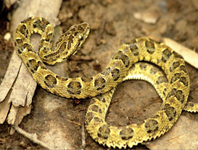Abstract
We describe a new marine snail-eating flatworm, Pericelis tectivorum sp. nov., found in coral-bearing marine aquaria. Pericelis tectivorum sp. nov. is characterised by several differential characters of the external and internal morphology like 1) a long line of frontal eyes extending anteriorly; 2) the length of the penis papilla; 3) the spherical seminal vesicle; 4) the lack of the enlargements of the ejaculatory duct; 5) the uterine vesicles, which start posterior of the female genital at the level of the sucker and 6) the distinct sucker. The combination of these characters in one species is unique and therefore the studied specimens are recognised by us as a new species. We additionally present a phylogenetic reconstruction using partial 28S rDNA sequences including three congeners. Our analysis demonstrates that P. tectivorum sp. nov. differs also genetically from other Pericelis species included in this analysis.
References
Bahia, J. & Padula, V. (2009) First record of Pseudoceros bicolor and Pericelis cata (Platyhelminthes: Polycladida) from Brazil. Marine Biodiversity Records, 2, 1–5.
https://doi.org/10.1017/S1755267209000918
Bahia, J., Padula, V. & Schrödl, M. (2017) Polycladida phylogeny and evolution: integrating evidence from 28S rDNA and morphology. Organisms Diversity & Evolution, 17, 653–678.
https://doi.org/10.1007/s13127-017-0327-5
Charbagi-Barbirou, K., Álvarez-Presas, M., Vila, M., Gammoudi, M., Tekaya, S. & Riutort, M. (2011) Marine triclads (Platyhelminthes: Tricladida: Maricola), a preliminary molecular approach to their phylogeny. CBM-Cahiers de Biologie Marine, 52 (3), 303.
Chen, H., Rangasamy, M., Tan, S.Y., Wang, H. & Siegfried, B.D. (2010). Evaluation of five methods for total DNA extraction from western corn rootworm beetles. PLoS ONE, 5 (8), e11963.
https://doi.org/10.1371/journal.pone.0011963
Collingwood, D. (1876) VI. On thirty-one Species of Marine Planarians, collected partly by the late Dr. Kelaart, FLS, at Trincomalee, and partly by Dr. Collingwood, FLS, in the Eastern Seas. Transactions of the Linnean Society of London. 2nd Series: Zoology, 1 (3), 83–98.
Ehlers, U. (1985) Das phylogenetische System der Plathelminthes. G Fischer, Stuttgart, New York, pp. 317.
Faubel, A. (1984) The Polycladida, Turbellaria. Proposal and establishment of a new system. Part II. The Cotylea. Mitteilungen aus dem Hamburgischen Zoologischen Museum und Institut, 81, 189–259.
Gmelin, J.F. (1791) Vermes. In: Gmelin, J.F. (Ed.), Caroli a Linnaei Systema Naturae per Regna Tria Naturae, Ed. 13. Tome 1(6). G.E. Beer, Lipsiae [Leipzig]. pp. 3021–3910.
Hyman, L.H. (1955) A further study of the polyclad flatworms of the West Indian region. Bulletin of Marine Science, 5 (4), 259–268.
Kato, K. (1943). Polyclads from Palao. Bulletin of the Biogeographical Society of Japan, 13 (12), 79–90.
Katoh, K. & Standley, D.M. (2013) MAFFT multiple sequence alignment software version 7: improvements in performance and usability. Molecular biology and evolution, 30 (4), 772–780.
https://doi.org/10.1093/molbev/mst010
Laidlaw, F.F. (1902) The marine Turbellaria, with an account of the anatomy of some of the species. The Fauna and Geography of the Maldive and Laccadive Archipelagoes, 1, 282–312.
Lang, A. (1881) Der Bau von Gunda segmentata und die Verwandtschaft der Plathelminthen mit Coelenteraten und Hirudineen. 3, 187–251.
Lang, A. (1884) Die Polycladen (Seeplanarien) des Golfes von Neapel und der angrenzenden Meeres-Abschnitte: eine Monographie. Wilhelm Engelmann, Leipzig, 688 pp.
Larsson, K. & Jondelius, U. (2008) Phylogeny of Catenulida and support for Platyhelminthes. Organisms Diversity & Evolution. 8 (5), 378–387.
https://doi.org/10.1016/j.ode.2008.09.002
Lee, K.-M., Beal, M. & Johnston, E.H. (2006) A new predatory flatworm (Platyhelminthes, Polycladida) from Botany Bay, New South Wales, Australia. Journal of Natural History, 39 (47), 3987–3995.
https://doi.org/10.1080/00222930500485263
Marcus, E. & Marcus, E. (1968) Polycladida from Curaçao and faunistically related regions. Studies on the Fauna of Curaçao and other Caribbean Islands, 101, 1–133.
Meixner, A. (1907) Polycladen von der Somaliküste, nebst einer Revision der Stylochinen. Zeitschrift für wissenschaftliche Zoologie, 88, 368–498.
Newman, L.J. & Cannon, L.R.G. (1995) The importance of the fixation of colour, pattern and form in tropical Pseudocerotidae (Platyhelminthes, Polycladida). Hydrobiologia, 305 (1), 141–143.
https://doi.org/10.1007/BF00036376
Posada, D. (2008). jModelTest: phylogenetic model averaging. Molecular Biology and Evolution, 25 (7), 1253–1256.
https://doi.org/10.1093/molbev/msn083
Prudhoe, S. (1985) A monograph on polyclad Turbellaria. London/Oxford: British Museum of Natural History and Oxford University Press.
Poulter, J.L. (1974) A new species of the genus Pericelis, a polyclad flatworm from Hawaii. In: Riser, N.W. & Morse, M.P. (Eds.), Biology of the Turbellaria McGraw-Hill, New York, pp. 93–107.
Queiroz, V., Sales, L., Neves, E.G. & Johnsson, R. (2013) Pericelis cata Marcus and Marcus, 1968 (Platyhelminthes: Polycladida): first record from northeast of Brazil. Check List, 9 (3), 628–630.
https://doi.org/10.15560/9.3.628
Rawlinson, K.A., Gillis, R.E., Billingings, Jr. & Borneman, E.H. (2011) Taxonomy and life history of the Acropora-eating flatworm Amakusaplana acroporae nov. sp. (Polycladida: Prosthiostomidae). Coral Reefs, 30 (3), 693–705.
https://doi.org/10.1007/s00338-011-0745-3
Romeis, B. (1989) Mikroskopische Technik (17 Auflage). Verlag Oldenbourg, München, 697 pp.
Ronquist, F., Teslenko, M., Van Der Mark, P., Ayres, D.L., Darling, A., Höhna, S., Larget, B., Liu, L., Suchard, M. & Huelsenbeck, J.P. (2012) MrBayes 3.2: efficient Bayesian phylogenetic inference and model choice across a large model space. Systematic biology, 61 (3), 539– 542.
https://doi.org/10.1093/sysbio/sys029
Schmarda, L.K. (1859) Neue wirbellose Thiere beobachtet und gesammelt auf einer Reise um die Erde 1853 bis 1857 (Vol. 1). Wilhelm Engelmann, Leipzig.
Stummer-Traunfels, R. (1933) Polycladida (continued). In: Bronn, H.G. (ed.), Klassen und Ordnungen des Tier-Reichs IV. (Vermes). Akademic Verlagges, Leipzig, pp. 3485–3596.
Velasquez, X., Bolaños, D.M. & Benayahu, Y. (2018) New records of cotylean flatworms (Platyhelminthes: Polycladida: Rhabditophora) from coastal habitats of Israel. Zootaxa, 4438 (2), 237–260.
https://doi.org/10.11646/zootaxa.4438.2.2

